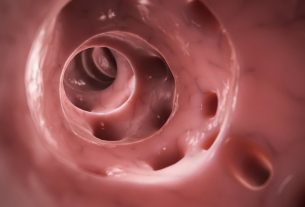Antibiotics for sinusitis, such as amoxicillin, axetilcefuroxime or levofloxacin, may be recommended by the doctor in cases of acute or chronic bacterial sinusitis, as they help eliminate bacteria, relieving inflammation of the nasal sinuses.
Bacterial sinusitis is inflammation of the nasal sinuses caused by bacteria, causing symptoms such as nasal congestion, green phlegm, fever, headache, pain around the eyes and a feeling of heaviness in the face, for example. Know how to identify the symptoms of sinusitis.
Treatment with antibiotics must be carried out with the recommendation of an otorhinolaryngologist, for the treatment time established by the doctor, which generally varies from 5 to 14 days, depending on the severity of the infection and the response to the antibiotic.

Main antibiotics for sinusitis
The main antibiotics for sinusitis that may be recommended by your doctor are:
1. Amoxicillin
Amoxicillin or amoxicillin + clavulanate is generally the first treatment option for bacterial sinusitis in people who are not allergic to penicillins, as it is capable of eliminating the most common bacteria that cause bacterial sinusitis, such as Streptococcus pneumoniae or Haemophilus influenzae.
How to use: The normally recommended dose of amoxicillin for adults is 500 mg orally, 3 times a day, or 875 mg, 2 times a day, for 5 to 10 days of treatment.
In the case of amoxicillin + clavulanate, the recommended doses for adults or children over 12 years of age are 1 tablet of amoxicillin 500 mg + clavulanate 125 mg, every 8 hours, or 1 tablet of amoxicillin 875 + clavulanate 125 mg, every 12 hours, as advised by the doctor. Find out how to take amoxicillin + clavulanate.
2. Clarithromycin
Clarithromycin is an antibiotic from the macrolide class, normally indicated as the first option for people allergic to penicillins, as it is capable of eliminating bacteria, such as Streptococcus pneumoniae, Haemophilus influenzae e Moraxella catarrhaliswhich causes bacterial sinusitis.
How to use: the normally recommended dose for adults is 1 tablet of 250 mg, or 1 tablet of 500 mg, every 12 hours, as advised by the doctor. See how to take clarithromycin correctly.
3. Acetilcefuroxima
Axetilcefuroxime is an antibiotic from the cephalosporin class, indicated to eliminate bacteria such as S. pneumoniae e H. influenzaehelping to alleviate the symptoms of bacterial sinusitis.
How to use: the normally recommended dose for adults is 1 tablet of 250 mg of axetilcefuroxime, every 12 hours. For children aged 3 months to 12 years, axetilcefuroxime oral suspension should be used and the doses should be calculated by the pediatrician according to the child’s body weight.
4. Doxycycline
Doxycycline is an antibiotic from the tetracycline class that acts by interfering with the metabolism of bacteria, such as Moraxella catarrhalis e Haemophilus influenzaepreventing its proliferation, and may be recommended for people allergic to penicillins.
How to use: The normally recommended dose of doxycycline for adults is 100 mg twice a day or 200 mg once a day, according to medical advice. For children over 8 years of age, doses must be calculated by the pediatrician, according to the child’s weight. See how to take doxycycline.
5. Clindamycin
Clindamycin is another antibiotic that can be used by people allergic to penicillins, in cases of moderate to severe bacterial sinusitis, and in some cases it can be combined with another antibiotic, cefixime, to help eliminate the bacteria. S. pneumoniae resistant and H. influenzae.
How to use: The recommended dose of clindamycin for adults is 300 mg, 3 times a day, as directed by the doctor.
6. Moxifloxacino
Moxifloxacin is an antibiotic of the fluoroquinolone class, indicated for acute bacterial sinusitis, inhibiting bacterial enzymes, preventing their multiplication and causing their death, relieving the symptoms of the infection.
How to use: the recommended dose for adults is 1 tablet of 400 mg, once a day, for 7 days of treatment, or as directed by the doctor. Moxifloxacin should not be used by children.
7. Levofloxacino
Levofloxacin is another antibiotic from the fluoroquinolone class, which can be used by people allergic to penicillins, as it helps eliminate bacteria that cause acute bacterial sinusitis, such as Streptococcus pneumoniae, Haemophilus influenza e Moraxella catarrhalis.
However, both levofloxacin and moxifloxacin should only be used when other treatment options are not indicated, due to the increased risk of side effects.
How to use: the normally recommended dose for adults is 500 mg to 750 mg of levofloxacin, once a day, for 5 days of treatment, or as directed by the doctor.
8. Metronidazole
Metronidazole is an antibiotic that can be used together with other antibiotics, such as amoxicillin or clindamycin, for bacterial sinusitis in people who have phlegm with pus and a foul smell, or the formation of abscesses, in order to increase coverage against anaerobic bacteria.
How to use: the normally recommended dose for adults is 500 mg, 3 times a day, as per medical advice.
Side effects of antibiotics
The most common side effects that may occur during antibiotic treatment are:
- Stomachache;
- Diarrhea;
- Nausea or vomiting;
- Indigestion;
- Sensitivity to light;
- Lack of appetite;
- Blurred or blurred vision;
- Teeth discoloration;
- Ringing in the ear;
- Headache;
- Blood or mucus in the stool;
- Fungal infections;
- Changes in the functioning of the liver, kidneys or other organs;
Additionally, antibiotics can cause serious allergic reactions or anaphylaxis, which require immediate medical attention.
Therefore, you should stop treatment and seek the nearest emergency room if you experience symptoms such as difficulty breathing, a feeling of a closed throat, swelling in the mouth, tongue or face, formation of blisters on the skin or hives.
Read too: Anaphylaxis: what it is, symptoms, causes and treatment
When to use
Antibiotics for sinusitis are indicated when it is suspected that the sinusitis has been caused by bacteria, and should only be used under the guidance of a doctor, who can indicate the most appropriate antibiotic and the duration of treatment.
Read too: Bacterial sinusitis: what it is, symptoms, causes and treatment
When not to use
Antibiotics should not be used in cases of sinusitis caused by viruses or fungi, as they only act on bacteria.
Furthermore, in the case of children, pregnant or breastfeeding women, or people who have kidney or liver problems or diseases, for example, they should only use antibiotics if recommended, after careful evaluation.
Other remedies for sinusitis
In addition to antibiotics, treatment for bacterial sinusitis may involve other medications that help relieve sinus symptoms and inflammation.
Therefore, the doctor may recommend the use of analgesics, corticosteroids or nasal decongestants, for example. See all remedies for sinusitis.
Furthermore, it is important to wash your nose with saline solution, as it helps to thin secretions and eliminate phlegm from the nose and sinuses.
Watch the following video with nurse Manuel Reis on how to wash your nose correctly:
Care during treatment
During treatment with antibiotics for bacterial sinusitis, it is important to follow some precautions:
- Taking the antibiotic correctly in doses and times established by the doctor;
- Do not interrupt treatment on its own;
- Carry out treatment for the correct time determined by the doctoreven if symptoms improve within a few days after starting to use the antibiotic;
- Consult the doctor againif there is no improvement in symptoms after 3 to 4 days of treatment;
- Ask your doctor or pharmacistwhether the antibiotic can be taken before or after a meal, with water or milk, so as not to interfere with the effectiveness of the treatment.
It is important to follow all medical recommendations when using antibiotics, in order to avoid bacterial resistance, which can make treating the infection more difficult and take longer, in addition to causing worsening of symptoms.
Read too: Bacterial resistance: what it is, why it happens and how to avoid it

Sign up for our newsletter and stay up to date with exclusive news
that can transform your routine!
Warning: Undefined array key "title" in /home/storelat/public_html/wp-content/plugins/link-whisper-premium/templates/frontend/related-posts.php on line 12
Warning: Undefined array key "title_tag" in /home/storelat/public_html/wp-content/plugins/link-whisper-premium/templates/frontend/related-posts.php on line 13



